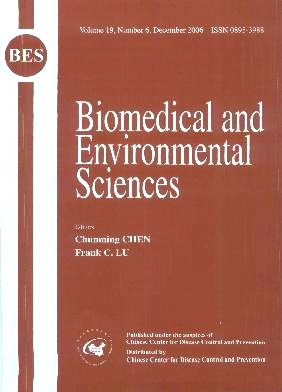QSARS for Acute Toxicity of Halogenated Benzenes to Bacteria in Natural Waters
-
Key words:
- River bacteria /
- Acute toxicity /
- QSARs /
- Prediction model
Abstract: Objective To measure the acute toxicity of halogenated benzenes to bacteria in natural waters and to study quantitative relationships between the structure and activity of chemicals. Methods The concentration values causing 50% inhibition of bacteria growth (24h-IC50) were determined according to the bacterial growth inhibition test method. The energy of the lowest unoccupied molecular orbital and the net charge of carbon atom of 20 halogenated benzenes were calculated by the quantum chemical MOPAC program. Results The log1/IC50 values ranged from 4.79 for 2,4-dinitrochlorobenzene to 3.65 for chlorobenzene. A quantitative structure-activity relationship model was derived from the toxicity and structural parameters: log1/IC50 =-0.531(ELUMO)+1.693(Qc)+0.163(logP)+3.375. This equation was found to fit well (r2=0.860, s=0.106), and the average percentage error was only 1.98%. Conclusion Halogenated benzenes and alkyl halogenated benzenes are non-polar narcotics, and have hydrophobicity-dependent toxicity. The halogenated phenols and anilines exhibit a higher toxic potency than their hydrophobicity, whereas 2,4-dinitrochlorobenzene is electrophile with the halogen acting as the leaving group.
| Citation: | GUAN-GHUA LU, CHAO WANG, YU-MEI LI. QSARS for Acute Toxicity of Halogenated Benzenes to Bacteria in Natural Waters[J]. Biomedical and Environmental Sciences, 2006, 19(6): 457-460. |







 Quick Links
Quick Links
 DownLoad:
DownLoad: